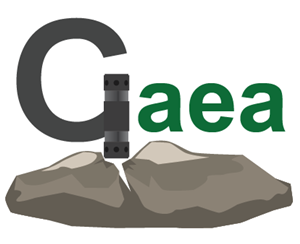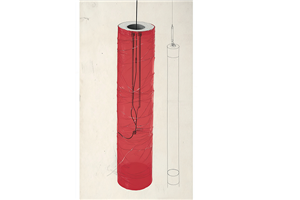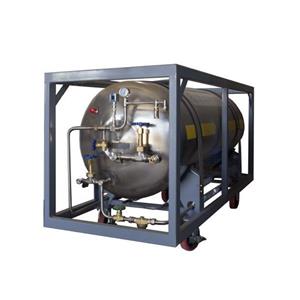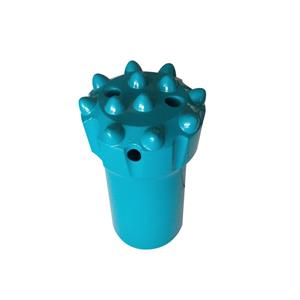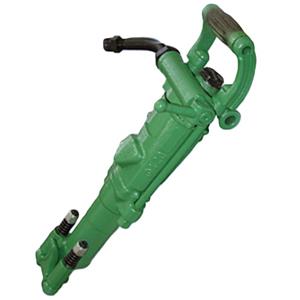Principles and Methods for Designing Open-Pit Mining Limits
Characteristics of Open-Pit Mining Open-pit mining is the extraction of ore in an exposed (surface) setting using specified excavation and haulage equipment. Its defining feature is that to recover ore, the surrounding rock and overburden must be stripped and the ore or rock transported to the surface via surface haulage routes or underground workings. This method is widely used for extracting metal ores, metallurgical raw materials, construction materials, chemical raw materials and coal.
Compared with underground mining, open-pit mining—because it operates in an exposed space—has the following characteristics:
(1) The working space is relatively unconstrained, which facilitates the use of large mechanized equipment. High levels of mechanization and automation can increase mining intensity and ore output.
(2) High labor productivity.
(3) Lower mining costs, making large-scale exploitation of low-grade ores feasible.
(4) Lower ore loss and dilution, which is favorable for recovering mineral resources.
(5) Shorter development time; capital expenditure per annual tonne of ore is lower than for underground mining.
(6) For hot or combustible ore bodies, open-pit mining can be safer than underground mining.
(7) Better working conditions and generally safer operations.
(8) Open-pit operations produce significant dust and vehicle emissions; blasted rock containing harmful components may pollute the ambient air, water and soil to some extent.
(9) Large volumes of overburden are deposited in waste dumps; waste facilities occupy substantial land (mountains, farmland) and can locally degrade the environment.
(10) Weather conditions such as snow, ice and heavy rain can negatively affect open-pit operations.
Defining the mining limits (pit limits) is the foundation of open-pit mine design and a prerequisite for economically efficient and safe exploitation. Researchers and practitioners worldwide have long studied optimization of pit limits and produced substantial results. However, because open-pit mines face complex, variable geological bodies, irregular grade distributions and changing economic parameters—nonlinear and dynamic factors—determining the optimal pit limits remains difficult. This paper addresses key issues in pit-limit optimization: it reviews prior work, analyzes dynamic characteristics of pit limits, examines the main factors affecting the final stable slope angle, proposes methods for predicting a reasonable final slope, and studies rapid methods for generating pit limit series and determining the final pit limit. Grounded in engineering practice and current developments and using multidisciplinary theory and methods, the study provides systematic, in-depth research with significant theoretical and practical value.
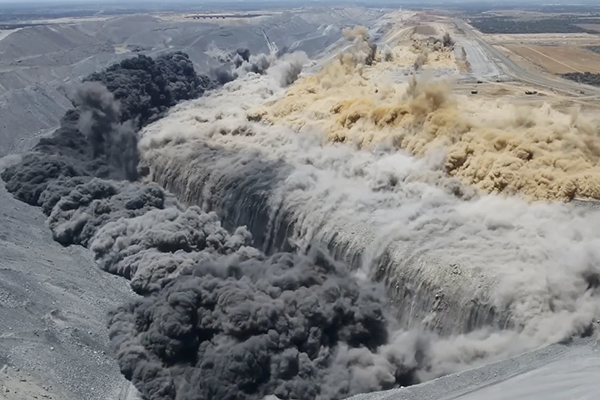
Design Principles for Open-Pit Limits The size of the open-pit limits determines the quantities of ore and overburden to be removed. As pit limits deepen and expand, ore tonnage increases but overburden also rises substantially, causing the stripping ratio to grow. Therefore, determining pit limits essentially involves controlling the stripping ratio so it does not exceed the economically acceptable stripping ratio.
Several kinds of stripping ratios are related to pit-limit size. Which stripping ratio to control is debated; the paper presents three historically early and representative academic viewpoints and their corresponding design criteria:
(1) Pit-limit stripping ratio not greater than the economic stripping ratio This criterion requires that the stripping ratio at the pit limit not exceed the economically reasonable stripping ratio. Its essence is to ensure that, as the pit deepens, the marginal economic benefit of open-pit mining is no worse than that of underground mining. For continuous orebodies with thin overburden, this principle tends to maximize total profit from the deposit. Because it aims to optimize the total economic outcome and is simple to compute and apply, the ≤ criterion is widely used in manual pit-limit design both domestically and internationally. However, for deposits with thick or discontinuous overburden, this criterion may not be appropriate; thus it is a necessary but not sufficient condition for an optimal pit limit.
(2) Average stripping ratio not greater than the economic stripping ratio This criterion aims to control the overall economic performance of open-pit mining so it is no worse than underground mining. The objective is to maximize recoverable ore within the pit-limit area while ensuring the overall open-pit economics do not fall below those of underground mining. Because it uses an arithmetic average, some local areas may economically underperform relative to underground methods. The ≤ average criterion can be used in conjunction with the ≤ pit-limit criterion: after outlining the pit by the pit-limit criterion, the average stripping ratio within that limit should be checked. This criterion is often applied for high-value, rare minerals or small deposits when maximizing open-pit extraction (to minimize dilution and ore loss) is desirable. It is also commonly used for dimension stone and limestone quarries.
(3) Production stripping ratio not greater than the economic stripping ratio The production stripping ratio reflects the actual stripping-to-ore ratio experienced over the mine production cycle. Applying the ≤ production criterion ensures that at any production stage the open-pit economic outcome is no worse than underground mining. The production stripping ratio may be an equilibrium production ratio or an unbalanced (time-dependent) stripping ratio. Pit limits derived from the production criterion are smaller than those from the pit-limit criterion but larger than those from the average-criterion, and thus lead to higher initial stripping and development investment. Because the production stripping ratio is difficult to define precisely and its relationship with depth is complex, this criterion is less practical and seldom used.
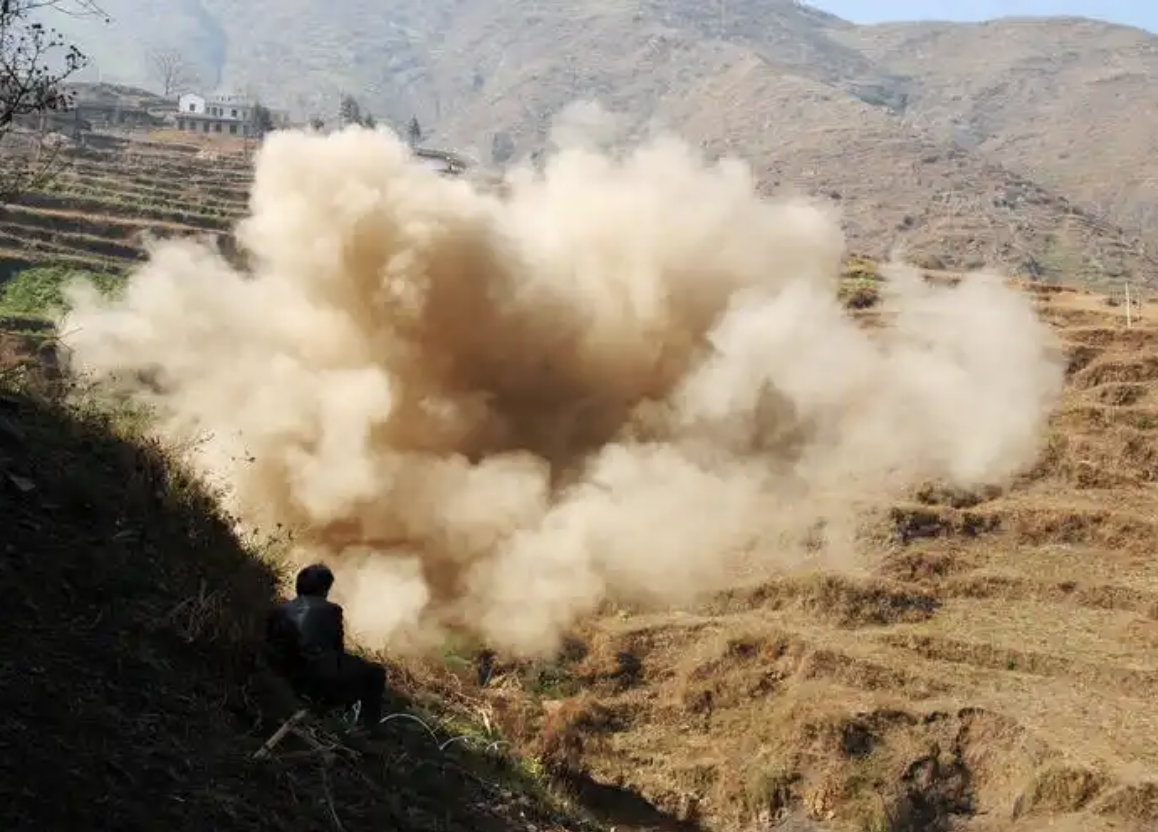
Elements of Open-Pit Mining Limits 3.1 Final slope angle and slope structure The final (ultimate) pit slope angle greatly affects production safety and economic performance. From an economic perspective, a steeper slope (larger angle) is preferred because a smaller slope angle increases waste removal and the stripping ratio. However, excessive slope angles can cause instability and endanger safety. Therefore, the final slope angle must meet both stability (safety) and operational (mining) requirements.
The stability requirement is that, based on the rock mass properties and stability analysis, the final slope angle must ensure slope stability. During the pit-limit design stage, final slope angles are generally selected with reference to similar mines and then subjected to preliminary stability analysis and simplified calculations with available data.
3.2 Bottom (pit floor) width and location (1) Minimum bottom width and values The minimum pit floor width must allow mining and haulage equipment to operate and perform safe work. It should generally not be narrower than the starter-trench (initial cut) width; the minimum value is determined by equipment specifications and haulage-layout calculations.
(2) Bottom location and geometrically similar (self-similar) pit limits The basic criterion for locating the pit floor is to minimize the average stripping ratio within the pit. Sometimes the pit floor is adjusted relative to rock-mechanical or structural zones so that final slopes avoid fractured or structurally weak zones, improving stability and simplifying blasting.
Depending on the horizontal thickness of the orebody, there are three possible positions for the pit floor:
If the orebody horizontal thickness is less than the minimum bottom width, draw the pit floor plane to the minimum width.
If the horizontal thickness equals or slightly exceeds the minimum bottom width, set the pit floor width equal to the orebody thickness.
If the orebody horizontal thickness greatly exceeds the minimum bottom width, use the minimum bottom width.
The chosen position should maximize recoverable ore, minimize waste, and produce the best ore quality—i.e., maximize economic benefit.
Because actual pit bottoms have nonzero widths, geometrically similar pit limits are not fully applicable. In design, determine the pit floor location by cases: (i) on flat terrain, both thick and thin orebodies may form geometrically similar pit limits; (ii) on inclined terrain, if the horizontal thickness is greater than the minimum width the pit is similar-shaped, whereas thin orebodies with horizontal thickness less than the minimum width must meet additional constraints.
(3) Design method for geometrically similar pit limits A geometrically similar pit limit is the theoretical optimal bottom location that minimizes the average stripping ratio—in effect the optimal bottom position when bottom width approaches zero.
3.3 Pit depth Pit-limit design criteria essentially determine the economically justified pit depth. Depending on orebody continuity and strike length, pits can be classified as long pits or short pits. If the length-to-width ratio exceeds 4:1, the pit is "long" and the end-wall ore volume is relatively small; in manual design, the end-wall contribution is often negligible. If the ratio is less than 4:1, the pit is "short" and the end-wall ore may account for 15–20% or more of the total and must be considered.
(1) Preliminary determination of pit depth on geological cross-sections Three methods exist for determining pit depth on geological cross-sections: (a) analytic method, (b) graphical method, and (c) plan-analysis (scheme-analysis) method. The plan-analysis method is most widely used. Its steps are: 1) propose several candidate pit depths; 2) compute the pit-limit stripping ratios for each depth; 3) plot analysis curves and select an initial depth.
(2) Adjust bottom elevation on cross-sections Adjust the pit-bottom elevation on cross-sections; the adjusted elevation is the design pit depth.
(3) Delineate the open-pit limits (manual method) Manual delineation of pit limits involves three major steps:
Draw the theoretical perimeter of the pit floor at the design depth: on each cross-section, longitudinal section and auxiliary section draw the pit limit at the design depth; then plot a plan of the stratigraphic horizon at that elevation. Project the endpoints of the pit floor from the section views onto the plan and join them to obtain the theoretical floor perimeter. Smooth the polyline into a curve to form the design pit floor perimeter. Verify that the floor dimensions meet haulage-layout and equipment-operation requirements—straightness, curvature radii, and floor length must satisfy technical standards.
Draw the pit limit: on the topographic-geological plan, plot the design floor perimeter and then, from inside out, draw bench toes and crest lines for each bench (i.e., benches and slopes) according to the selected slope elements. Depressed parts of the pit form closed bench toes on the plan; hillside parts may have bench toe lines that tie into contour lines of the same elevation.
Draw the final-pit plan: on the pit-limit plan, lay out haulage and development roads (line routing), then from the bottom outward draw bench faces and platforms for the final configuration. Also design inter-bench ramp platforms where required. Check and adjust the initial pit-limit plan since road routing and development constraints may relax slope angles and increase stripping.
(4) Draw pit-limit cross-sections Using the final pit plan, draw three representative cross-sections at the appropriate scales. The longitudinal section line is drawn through the plan’s key bottom-width points; using bench widths, successively project upward to complete the cross-sections.
Determination and Optimization of Open-Pit Limits Using the commonly applied design principles described above, the method and steps for pit-limit determination and optimization are as follows:
(1) Determine pit depth. For elongated pits, first determine depth on each geological cross-section and then adjust bottom elevation using longitudinal sections. For short pits with large depth-to-width ratios, consider effects of end-wall expansion. If depth cannot be determined directly from sections, compute pit-limit stripping ratios on plan views for several candidate depths and select the depth where the pit-limit stripping ratio equals the economically reasonable stripping ratio.
(2) Determine the pit-floor perimeter on plan. The pit floor width may be greater or less than the orebody horizontal thickness, but must meet the minimum width requirement. The principle is to maximize ore recovery while minimizing waste. The minimum bottom width should ensure safe production and normal operation of mining and haulage equipment; in practice it corresponds to the starter-trench width and depends on method and equipment—typically not less than 20–30 m for safety.
After fixing the bottom elevation and end positions, draw the theoretical floor perimeter by projecting endpoints from cross-sections onto the stratigraphic plan at the design elevation and connecting them. For haulage convenience, the floor perimeter should be as straight as possible; curved parts must satisfy minimum curvature radii for equipment.
(3) Determine slope structure and slope angles. Slope stability is essential for safe production. Correct selection of slope angle is the primary means of ensuring stability. Within the limits of technical and stability requirements, adopt the steepest feasible final slope angle to minimize waste removal. When setting slope angles, consider rock mass properties, geological structure, hydrogeology, mining method and equipment, planned mine life and climate. Where possible, conduct rock-mechanical tests and perform slope stability calculations. Because existing calculation methods are not always perfect, in practice final slope angles are often chosen with reference to analogous mines and empirical data.
(4) Draw the final-plan view. Steps include:
Transfer the determined pit-floor perimeter onto transparent paper and overlay it on the topographic-geological map; from the inside out draw bench toes according to slope elements.
Lay out haul roads.
Review and revise the preliminary final-pit plan.
Project the finalized plan onto cross-sections so that section limits agree with the plan. Because slope angle, floor width and depth strongly affect final pit limits, a dynamic evaluation index system can be established to model and optimize open-pit limits. Improved BP neural network algorithms can be used to construct prediction models for stable final slope angles. Three-dimensional computer simulation can support efficient, visual scheduling of production. Computer simulation methods enable further optimization of pit limits.
Conclusion Open-pit mining uses specified excavation and haulage equipment in an exposed working space. The final pit slope angle, pit-floor width and location, and pit depth substantially influence production safety and economics. Determining pit limits is a complex task requiring adherence to fundamental principles while flexibly adapting to site-specific conditions to achieve a reasonable design. This paper reviewed key issues in pit-limit optimization, analyzed characteristics of open-pit limits, examined primary indicators affecting the stable final slope angle and methods for predicting a reasonable final slope, and discussed approaches for optimizing pit limits.
